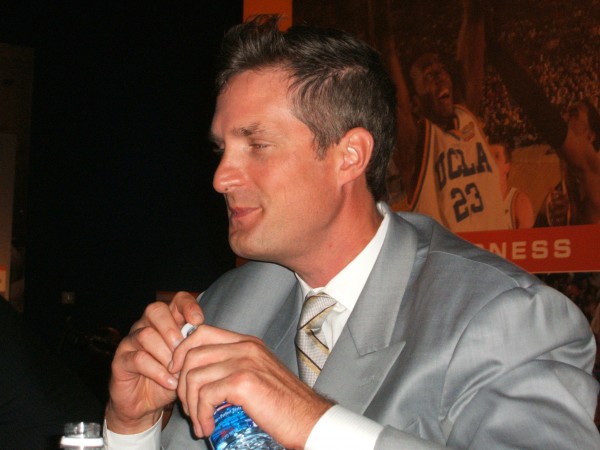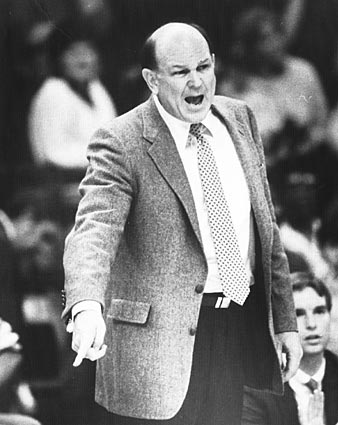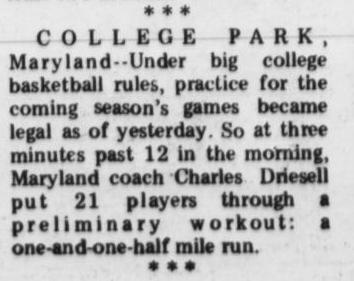ACC Morning Five: 11.09.11 Edition
Posted by mpatton on November 9th, 2011- Washington Post: Mike Scott will be very important for Virginia, and in more ways than filling up the stat sheets. Sure his double-figure scoring and double-figure rebounding should help a middling offense and horrendous offensive rebounding squad improve in those areas this season. But more importantly, he’ll draw defenders and allow Joe Harris to move back to small forward. That’s fairly significant, as Harris (a 6’6″ sophomore) was forced to play the power forward spot despite being the team’s most consistent outside shooter last year. Scott should also keep defenses honest in the paint, which should allow an already very good perimeter shooting team more openings. Basically, Mike Scott is the only reason it’s not laughable for the media to rank Tony Bennett’s squad fourth in the conference, as the WaPo observes.
- Charlotte Observer: A hallmark of Mike Krzyzewski-coached teams is gritty, overplaying man-to-man defense that’s especially effective in keeping opponents from getting open perimeter looks. However, a quick glance at Duke‘s backcourt (Seth Curry, Andre Dawkins and Austin Rivers) doesn’t inspire a lot of confidence. The questions proved legitimate in Duke’s preseason scrimmage, as D-II Bellarmine managed to knock down eight outside buckets. Duke doesn’t have much time though, as Belmont made over nine threes a game last season (at a 38% clip). Oh, and the Bruins won 30 games last year and bring back nearly all of their talent. Do I hear a non-conference upset special brewing in Cameron Indoor this Friday?
- Fayetteville Observer: Speaking of Duke generalizations, Bret Strelow breaks down the importance of big men for the Blue Devils’ upcoming season. And if you look at the roster, it makes sense. How many teams have two athletic 6’10” players and a 6’11” guy who gets buckets? Not many. But Duke’s current frontcourt has had limited success so far, even if Miles Plumlee, Mason Plumlee and Ryan Kelly all seem capable of breakout seasons. They’re also fighting against the stereotype that Duke big men struggle. Exhibition play tends to overrate frontcourts mightily (if you ask the above question about a D-II school, no matter what caliber, the answer will be an emphatic “no”), but the Plumlee brothers have looked especially good. To live up to its top-five potential Duke needs one of its forwards to have a star campaign.
- Charlotte Observer: Mark Gottfried didn’t hear a lot of compliments about his team when he first took the job. The trouble seems as much coach-related as talent-related, though — in a recent interview, Scott Wood “basically admits practice used to be ‘just throwing the ball out there and shooting it.’ Now practices have a lot more drills.” That’s the sort of culture Gottfried was facing when he moved to Raleigh. From player quotes such as these, it sounds like Gottfried has the team buying into his style; and if he wins there, players will keep buying it.
- Richmond Times-Dispatch: Potential breakout candidate Erick Green may miss Virginia Tech‘s season opener against East Tennessee State with an “Achilles’ strain”. The Hokies have already lost JT Thompson to a season-ending injury, and definitely can’t afford to lose Green too. Green is expected to be the star, both on offense and defense, for Seth Greenberg’s team in its latest pursuit of an invitation to the Big Dance. Here’s to hoping the rash of preseason injuries doesn’t carry over into the regular season because it feels like there have been way more injuries than usual this year.
In honor of the opening of college basketball season, Sports Illustrated has a slideshow of college basketball previews going back as far as the early 1960s. The most interesting (with borderline-racist undertones) image is probably the 1967 cover calling for a 12-foot basket, but I’ll leave you with NC State legend David Thompson. Thompson led the 1972-73 Wolfpack to an undefeated season averaging nearly 25 points a game (ironically his least dominant statistical season).
















































